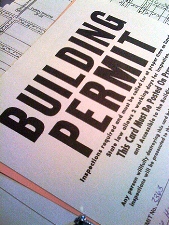Pole Barns and Tornados
(Excerpts from a July 21, 2018 Jeffersonville, Indiana News and Tribune article by Jenna Esarey are incorporated in this article)
“NEW MIDDLETOWN — With Bobcats, ATVs and chainsaws, many residents of New Middletown spent their Saturday cleaning up after an EF-1 tornado cut a swath through homes, barns and cornfields Friday afternoon.
The National Weather Service on Saturday confirmed that an EF-1 tornado, with winds of 105 miles per hour, hit the small community just southwest of Corydon in Harrison County around 2:16 Friday afternoon.
The worst of the damage was near New Middletown, though. Homes along Simler Road were buffeted by the tornado, however, most structural damage was to out buildings.
Just down the road, Danny Perry’s farm was severely damaged.
“I lost my barn, back side of my pole barn, the back of my roof and all of my fruit trees,” Danny Perry said.”
2018 International Building Code (IBC) shows for Indiana in Section 1609.3 a basic wind speed (Vult) of 107 mph (miles per hour) for Risk Category I buildings – these would be buildings unlikely to pose a risk to human life in event of a failure, or 114 mph for most other buildings (Risk Category II).
Given EF-1 tornado speed of 105 mph, there should have been minimal damage to any pole barn (post frame) buildings designed by a RDP (Registered Design Professional – architect or engineer) and built according to sealed plans.
 In order for this to occur, all jurisdictions should be conforming – requiring Building Permits for structures, RDP sealed plans in order to obtain a structural permit to build, and jobsite inspections to insure conformity to building plans.
In order for this to occur, all jurisdictions should be conforming – requiring Building Permits for structures, RDP sealed plans in order to obtain a structural permit to build, and jobsite inspections to insure conformity to building plans.
Not only do many jurisdictions allow construction without RDP designed plans, but some do not even require building permits!
In this or other areas where buildings may be subject to higher wind speed tornados, building owners can opt for greater wind speeds than Code minimum (keep in mind minimum is LEAST). In many cases designing to withstand higher winds is a nominal investment, so why not?






